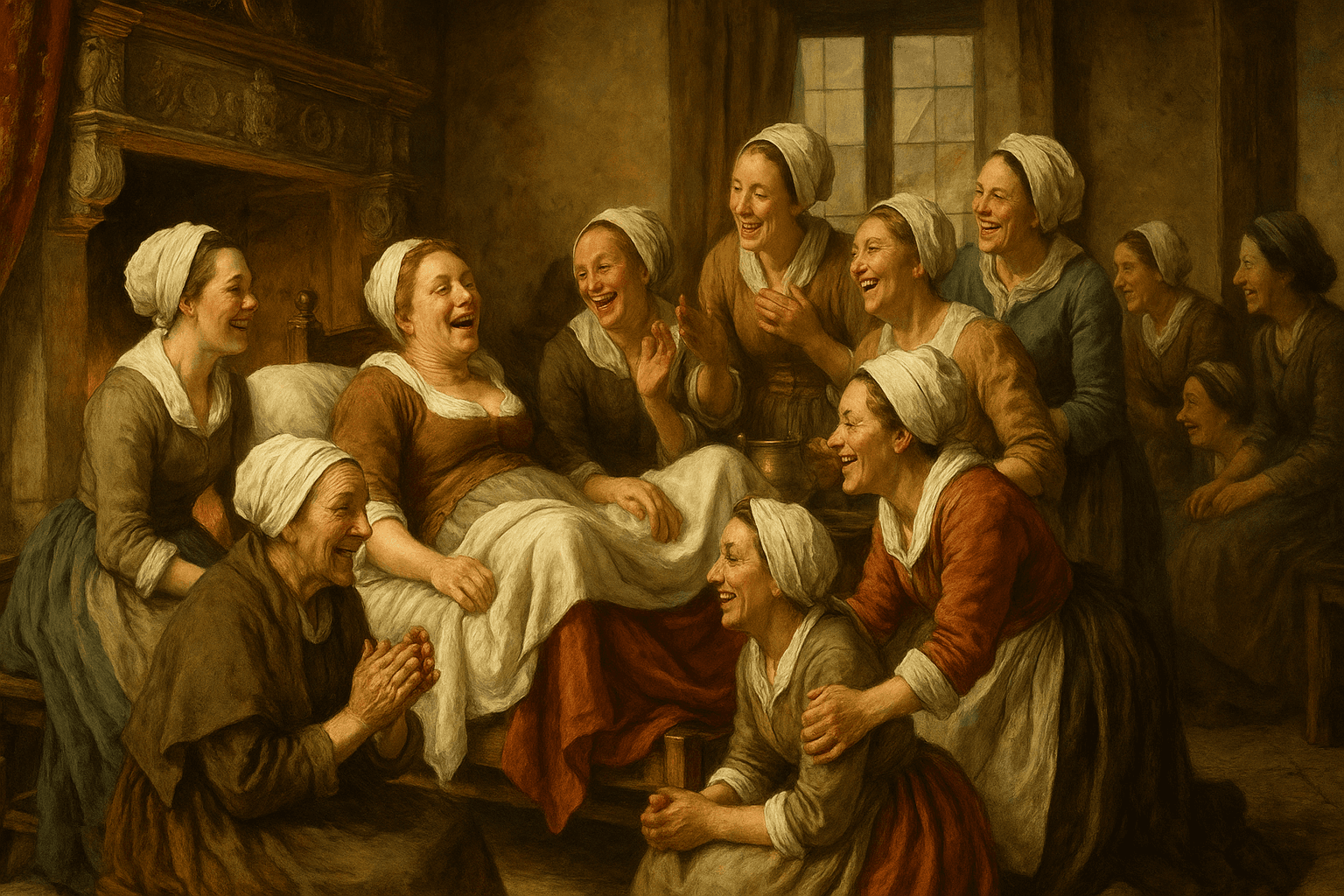The Heartbeat of Community: Exploring Dynamics in Les caquets de l'accouchée

When you dive into Les caquets de l'accouchée, you’re not just exploring the intricacies of childbirth; you’re stepping into a vibrant tapestry of community dynamics that define 17th-century Parisian society. From the lively gatherings of women supporting each other through the trials of motherhood to the satirical critiques of social customs, the book paints a rich picture of how communal interactions shape lives.
At the heart of the narrative is the communal experience surrounding childbirth. Chapters highlight how the birthing room transforms into a social arena, filled with laughter, gossip, and the occasional critique of societal norms. Women gather not just to celebrate a new life, but to exchange wisdom, support, and sometimes even a bit of judgment. This isn’t merely a backdrop; it’s a crucial element that reveals how women navigate their roles in a patriarchal society. The laughter shared among the commères, the anxieties of the husbands, and the rituals surrounding childbirth all reflect a community deeply intertwined in shared experiences.
As you read through the chapters, you’ll notice how the dynamics of class and wealth influence these interactions. The lavish celebrations of noble births contrast sharply with the more modest gatherings of bourgeois women, creating a rich field for social commentary. The author cleverly critiques these excesses, inviting readers to reflect on the moral implications of wealth and status. The humor woven into these critiques not only entertains but serves to highlight the absurdities of social expectations, making you chuckle while simultaneously contemplating the deeper social fabric of the time.
Moreover, the narrative showcases the tension between societal expectations and personal desires. The conversations among the women reveal their struggles against the confines of their roles, particularly regarding marriage and motherhood. They share tales of frustration, joy, and the occasional scandal, underscoring the complexity of female relationships. Through these interactions, the author emphasizes the importance of female solidarity—how gossip, often viewed negatively, can also serve as a means of support and connection in navigating the challenges of their lives.
But it’s not just about the women; the book also delves into the broader implications of these community dynamics. Legal disputes, social critiques, and even the influence of political figures reveal how intertwined personal and public lives are. The conversations among characters often reflect a larger critique of societal norms, pointing out injustices and calling for reforms, making it clear that the community's voice is powerful.
As the narrative unfolds, you’ll find yourself questioning the nature of community. What does it mean to belong? How do shared experiences shape our identities? The community depicted in Les caquets de l'accouchée is both a source of strength and a site of conflict, illustrating the duality of human relationships.
In the end, the book reminds us that community dynamics are not just historical curiosities; they resonate with our contemporary experiences. Just as the women of 17th-century Paris navigated their lives through connection and communication, we too find our identities shaped by the communities we engage with. So, whether you’re laughing at the absurdities of social customs or reflecting on the deeper implications of these interactions, Les caquets de l'accouchée invites you to appreciate the vibrant, messy, and beautiful tapestry of community life. It’s a powerful reminder that, in the end, we’re all navigating our unique paths while being woven together in the fabric of our shared experiences.
Books: Les caquets de l'accouchée / nouvelle édition revue sur les pièces originales
Publishers: Public Domain